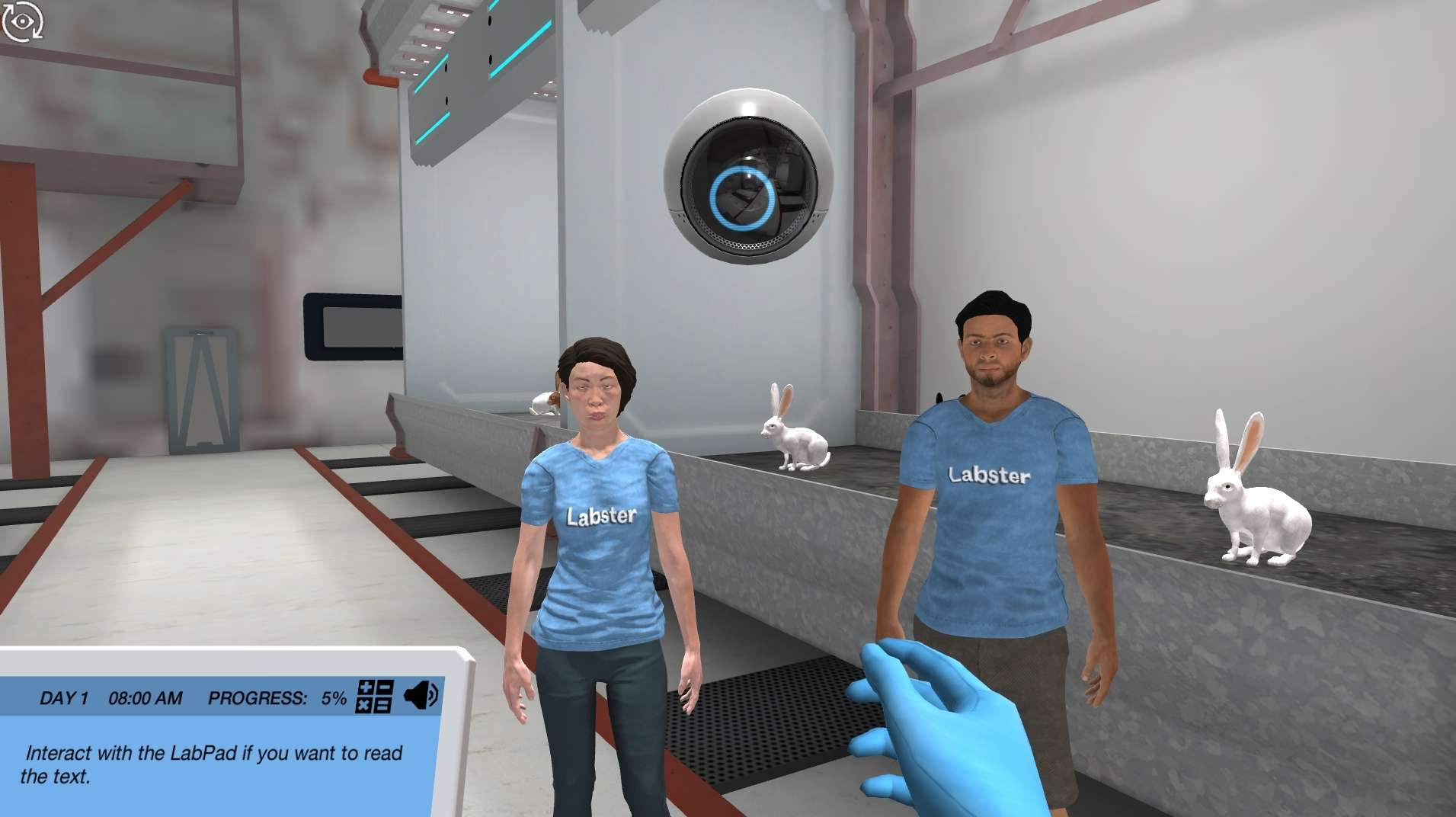Heading 1
Heading 2
Heading 3
Heading 4
Heading 5
Heading 6
Lorem ipsum dolor sit amet, consectetur adipiscing elit, sed do eiusmod tempor incididunt ut labore et dolore magna aliqua. Ut enim ad minim veniam, quis nostrud exercitation ullamco laboris nisi ut aliquip ex ea commodo consequat. Duis aute irure dolor in reprehenderit in voluptate velit esse cillum dolore eu fugiat nulla pariatur.
Block quote
Ordered list
- Item 1
- Item 2
- Item 3
Unordered list
- Item A
- Item B
- Item C
Bold text
Emphasis
Superscript
Subscript
About This Simulation
Develop a method for keeping a population of rabbits under control by using hormonal treatments. Investigate how different concentrations of different hormones impact the fertility of male and female rabbits.
Learning Objectives
- Understand hormonal feedback mechanisms
- Use physiological methods to assess fertility in males and females
- Understand how hormonal feedback mechanisms among LH, FSH progesterone and estrogen control fertility and ovulation in females
- Understand how hormonal feedback mechanisms among LH, FSH, and testosterone control fertility in males
About This Simulation
Lab Techniques
- With a Radioimmunoassay investigate the hormonal concentrations in blood serum
- Use the McPhail scale to judge uterus development
- With light microscopy assess the motility and viability of semen
Related Standards
- No direct alignment
- No direct alignment
- Biology 11.4 Sexual reproduction
Learn More About This Simulation
Hormones are crazy! Can we control them? In this simulation you will learn about different hormones’ influence on fertility. You will use rabbits as test subjects to learn about the impact of different hormones on the reproductive cycles of mammals, such as humans.
Inhibit rabbit fertility with hormones
A petting zoo is experiencing problems with wildly multiplying rabbits and they are in desperate need of your help! Your mission in this simulation is to develop an efficient method for getting the rabbit population under control.
Endocrine system controls fertility
To test the effects of different levels of gonadotropin releasing hormone (GnRH), luteinizing hormone (LH) and follicle stimulating hormone (FSH) in the blood of female rabbits you will work in a virtual lab. Normally, you would need weeks to complete experiments, and you would have to sacrifice a number of rabbits to dissect and inspect the uterus. For the males, the experiments with DMAU would take multiple weeks to test with living specimens. In this simulation, you don’t have to worry about any of those things! Time can be sped up to avoid waiting time and no animals are harmed in a virtual world. In addition to that, instead of compiling heavy tables from your data, the virtual machines will present your data in easy-to-digest graphs and charts.
Use hormones as a contraceptive
To find a good hormonal contraceptive you will have to test several rabbits. You will feed each treatment to a rabbit, and then, with a microscope and radioimmunoassays, you will investigate the hormones’ effect on the thickening of the uterus in females, and motility and number of semen in males.
Will you be able to use the skills you acquire to develop a hormonal contraceptive for the rabbits?
Boost STEM Pass Rates
Boost Learning with Fun
75% of students show high engagement and improved grades with Labster
Discover Simulations That Match Your Syllabus
Easily bolster your learning objectives with relevant, interactive content
Place Students in the Shoes of Real Scientists
Practice a lab procedure or visualize theory through narrative-driven scenarios


For Science Programs Providing a Learning Advantage
FAQs
Find answers to frequently asked questions.
Heading 1
Heading 2
Heading 3
Heading 4
Heading 5
Heading 6
Lorem ipsum dolor sit amet, consectetur adipiscing elit, sed do eiusmod tempor incididunt ut labore et dolore magna aliqua. Ut enim ad minim veniam, quis nostrud exercitation ullamco laboris nisi ut aliquip ex ea commodo consequat. Duis aute irure dolor in reprehenderit in voluptate velit esse cillum dolore eu fugiat nulla pariatur.
Block quote
Ordered list
- Item 1
- Item 2
- Item 3
Unordered list
- Item A
- Item B
- Item C
Bold text
Emphasis
Superscript
Subscript
Labster can be integrated within a school's LMS (Learning Management System), and students can access it like any other assignment in their LMS. If your Institution does not choose an LMS integration, students will log in to Labster's Course Manager once they have an account created. Your institution will decide the access method during the sales process.
Labster is available for purchase by instructors, faculty, and administrators at education institutions. Purchasing our starter package, Labster Explorer, can be done using a credit card if you are located in the USA, Canada, or Mexico. If you are outside of North America or are choosing a higher plan, please speak with a Labster sales representative. Compare plans.
Labster simulations are created by real scientists and designed with unparalleled interactivity. Unlike point and click competitors, Labster simulations immerse students and encourage mastery through active learning.
Labster supports a wide range of courses at the high school and university level across fields in biology, chemistry and physics. Some simulations mimic lab procedures with high fidelity to train foundational skills, while others are meant to bring theory to life through interactive scenarios.










.png?fm=jpg&w=450&h=400)







